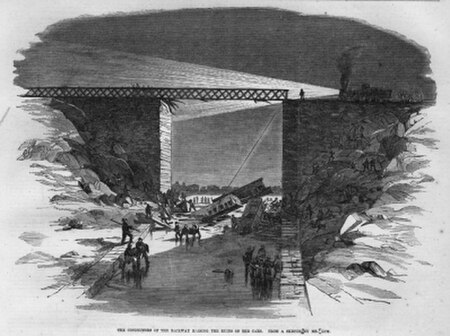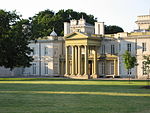Desjardins Canal disaster
Bridge disasters caused by collisionHistory of Hamilton, OntarioPassenger rail transport in OntarioRailway accidents and incidents in OntarioRailway accidents in 1857

The Desjardins Canal disaster was a rail transport disaster near Hamilton, Canada West. The train wreck occurred at 6:15 p.m. on March 12, 1857 (1857-03-12) when a train on the Great Western Railway crashed through a bridge over the Desjardins Canal, causing the train and its passengers to fall 18 metres (60 ft) into the ice below. With 59 deaths, it is considered one of the worst rail disasters in Canadian history.
Excerpt from the Wikipedia article Desjardins Canal disaster (License: CC BY-SA 3.0, Authors, Images).Desjardins Canal disaster
York Boulevard, Hamilton
Geographical coordinates (GPS) Address Nearby Places Show on map
Geographical coordinates (GPS)
| Latitude | Longitude |
|---|---|
| N 43.279611 ° | E -79.890904 ° |
Address
York Boulevard 920
L8S 3T3 Hamilton
Ontario, Canada
Open on Google Maps








